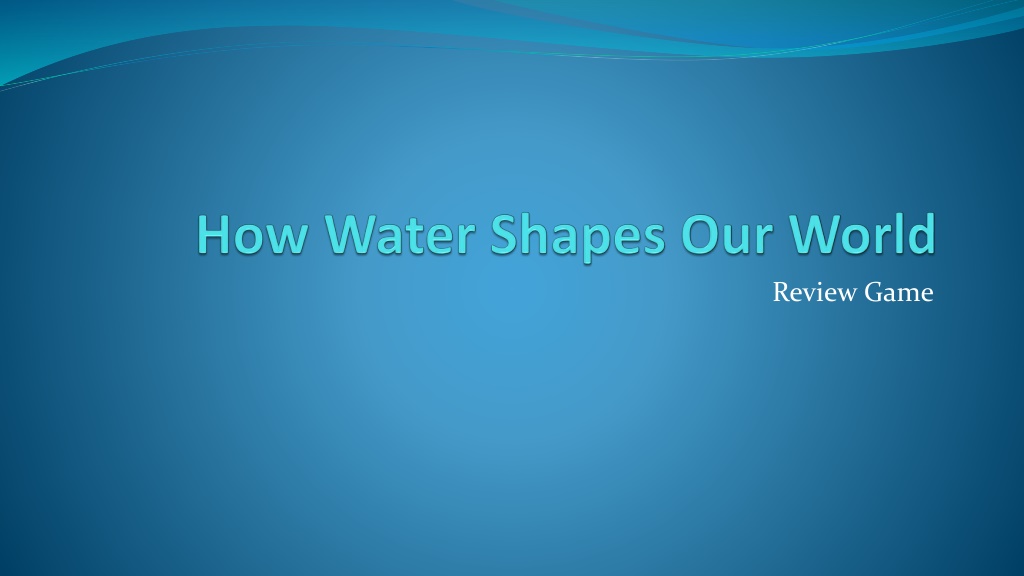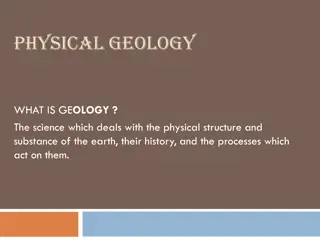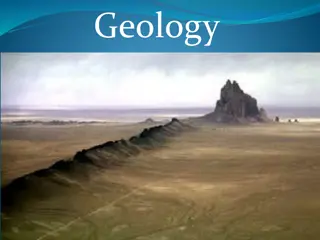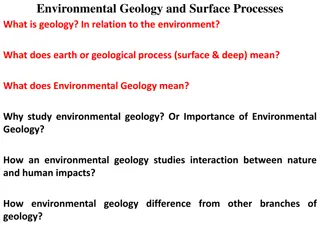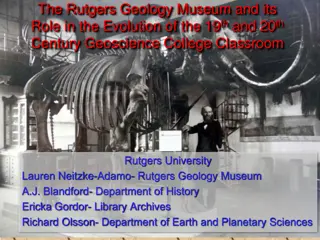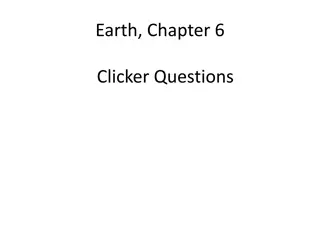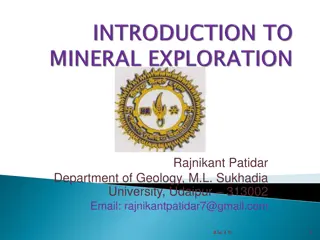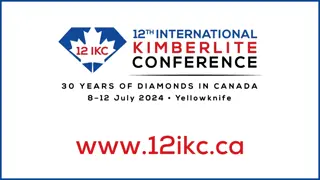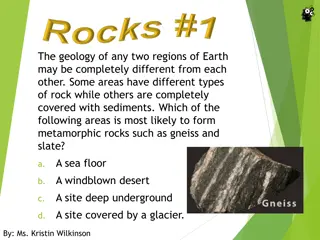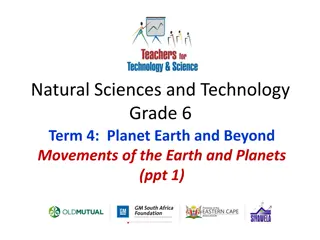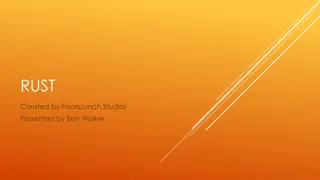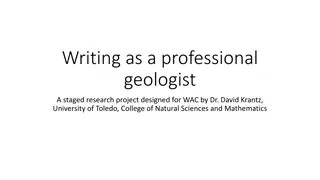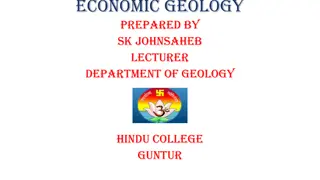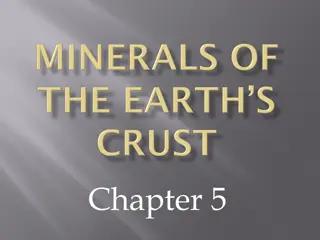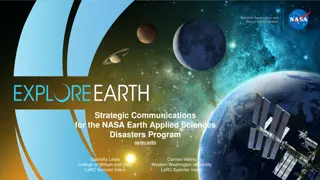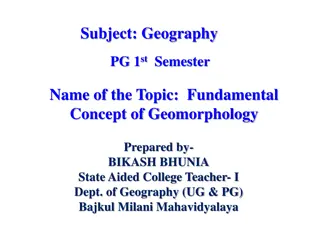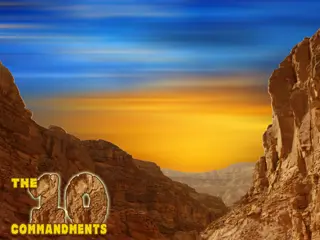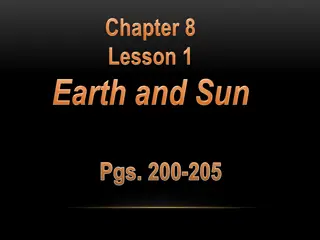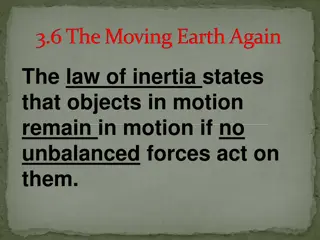Interactive Review Game: Test Your Knowledge on Geology and Earth Sciences
Dive into an engaging Round Robin review game where participants answer questions on geology and earth sciences to earn points. Rules emphasize quick thinking, accurate responses, and teamwork. Explore various topics such as rock types, mountain formation, and water movement in a fun and competitive setting.
Download Presentation

Please find below an Image/Link to download the presentation.
The content on the website is provided AS IS for your information and personal use only. It may not be sold, licensed, or shared on other websites without obtaining consent from the author. Download presentation by click this link. If you encounter any issues during the download, it is possible that the publisher has removed the file from their server.
E N D
Presentation Transcript
Rules: Round Robin - One representative from each lab table will come to a buzzer to receive a question on the board Each correct response results in 1 point
Rules Continued: Incorrect answer: Same question goes to any other person remaining that did not buzz in before - awarded 1 point Next question will go to another set of lab table representatives Outside talking amongst lab tables during a round results in deduction of point
Rules Continued: First response - only response (cannot change answer)
Question 1 A natural storage site of water is called a what?
Question 2 The motion of water to different reservoirs by various methods is called the what?
Question 3 What is the term for physical movement of liquid water at the Earth s surface?
Question 4 What is the type of rock that has horizontal layers and is likely to contain fossils?
Question 5 Igneous rocks are formed by a. Compression b. Deposition of sediments c. Melting and cooling d. High heat
Question 6 Mountains are mainly formed and grow taller by what process?
Question 7 Sedimentary rock that experience high heat and compression can transform into what type of rock?
Question 8 Sedimentary rock is formed by layers of sediments depositing on top of each other and cementing together. If a landform is developed this way, this is a example of a. Uplift b. Burial c. Volcanic activity d. Weathering
Question 9 What is the largest reservoir? Extra point what is the smallest?
Question 10 The most fresh water is stored in what reservoir?
Question 11 What process can water from the atmosphere move to another reservoir?
Question 12 If there is no volcanic activity in a specific area, what process will move igneous rocks to the surface?
Question 13 Where do metamorphic rocks form?
Question 14 What is the term for water moving to groundwater storage?
Question 15 Which of the following factors will decrease erosion/deposition in a river? a. Higher altitude of river b. More water c. More curves that shape the river d. Denser material that lines the river
Question 16 When rocks collide with other objects in moving water, resulting in physical abrasion of rocks to make them smaller or more rounded, what is this called?
Question 17 When rocks collect in another area due to moving water, what is this called?
Question 18 If you were performing a scratch test on a rock, and it was extremely difficult to produce a scratch, what type of rock would you be dealing with?
Question 19 What type of rock erodes the quickest?
Question 20 The motion of different rocks to different areas by various methods is called the what?
Question 21 What is the only way water can move out of the ocean?
Question 22 What is one landform you see?
Question 23 What determines the size of a reservoir?
Question 24 What direction does water flow?
Question 25 If lava melts and cools layers of igneous rock to form a landform, what process developed this landform?
Question 26 Moving water at Earth s surface cannot move by a. Precipitation b. Evaporate c. Infiltrate d. Flow
Question 27 What type of rock will never contain fossils?
Question 28 What is the process in which moving water will transport rocks, sediments, etc. to other locations?
Question 29 Name one way in which you can increase erosion in a river?
Question 30 How can you tell sedimentary rock is in this landform?
Question 31 How can you tell a high level of erosion is occurring in a flooded river?
Question 32 How can a fossil of an oceanic organism be found on top of a mountain?
Question 33 If a certain rock has multicolored crystals and vertical layers, what type of rock would this be?
Question 34 How can water from groundwater storage move to a lake?
Question 35 According to the infiltration model and the stream table model, what type of material will water infiltrate at the fastest rate?
Question 36 Will water infiltrate gravel at a quick rate? Extra point explain why
Question 37 How can water from a glacier move to another reservoir?
Question 38 If water infiltrates the ground at a quick rate and makes the ground consistently softer under a building, what phenomena can happen?
Question 39 What is a piece of evidence that can indicate the presence of ground water?
Question 40 If acid rain or other chemicals come into contact with geological structures and shapes them differently over time, what is this process generally called?
Items To Study For Test DQB scientific principles and definitions Note sheets / diagrams IQWST Activities Application of Principles Be prepared to make scientific claims of how landforms were shaped by water
